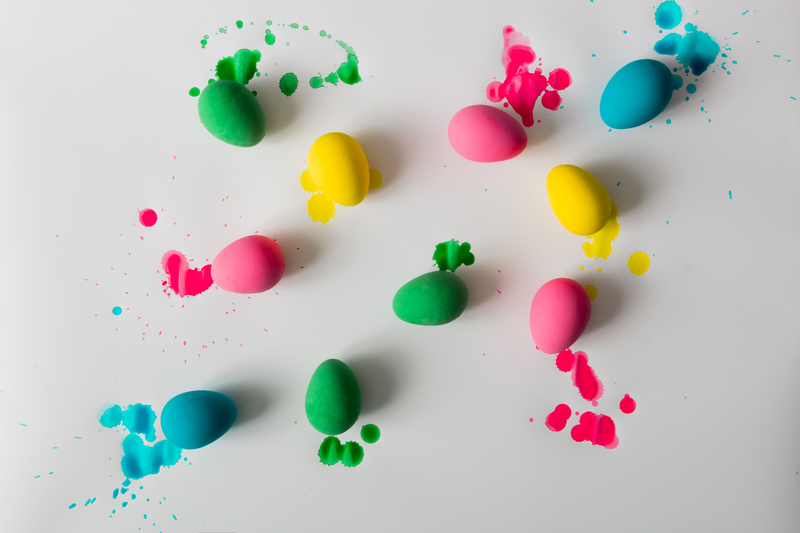Top Tips to Maintain a Mold-Free Bathroom
Posted on 03/09/2025
Top Tips to Maintain a Mold-Free Bathroom
Your bathroom is a sanctuary of hygiene and relaxation. Yet, it's also the most susceptible room in your home to mold and mildew. Mold growth not only looks unsightly, but it can pose serious health risks and cause costly damage to your property. If you're searching for the best practices and expert advice on keeping your bathroom mold-free, you're in the right place. This comprehensive guide will provide you with actionable steps and insights to banish mold from your washroom for good!
Why Is Mold So Common in Bathrooms?
Bathrooms create the perfect storm of conditions for mold to thrive: warmth, moisture, and limited ventilation. Showers, hot baths, and even steamy mirrors all contribute to an environment where mold spores can settle and multiply rapidly.
Mold in bathrooms typically appears as black, green, or white patches on tiles, grout, ceilings, walls, and even behind fixtures. If left unchecked, mold can damage surfaces and negatively affect air quality, triggering allergies and respiratory issues.

How to Prevent Mold in Your Bathroom
The good news? With the right care and maintenance routine, you can keep your bathroom gleaming and free from mold. Below are the top strategies to prevent mold growth and ensure a healthier bathroom environment for yourself and your loved ones.
1. Maximize Ventilation
Proper air circulation is your number one defense against mold in bathrooms. Without it, lingering moisture after hot showers can quickly become a breeding ground for fungi.
- Use an exhaust fan: Always run your bathroom fan during baths and for at least 20 minutes afterwards to expel steam and humidity.
- Open windows: If possible, open bathroom windows to allow fresh air to flow and dry out surfaces naturally.
- Leave the door open: After using the bathroom, crack the door open so moisture can escape.
- Clean vent covers and fans regularly to maintain their efficiency.
2. Wipe Down Surfaces Daily
The simplest way to prevent bathroom mold is to eliminate the moisture it needs to grow. After showering or bathing, use a squeegee or towel to wipe down:
- Shower doors and walls
- Bathtub surfaces
- Sink counters
- Tile flooring prone to collecting water
This daily habit takes just a few minutes but makes a world of difference in keeping your bathroom dry and mold-free.
3. Use Mold-Resistant Materials
Modern construction materials can play a huge role in keeping mold out of bathrooms. Consider the following upgrades:
- Mold-resistant paint: Many leading brands offer specially formulated paints for kitchens and bathrooms that resist mildew and mold.
- Moisture-resistant drywall: Also known as "greenboard," this type of drywall is less likely to harbor mold.
- Silicone caulk: Use silicone-based, waterproof caulk to seal seams around tubs, sinks, and showers.
- Mold-resistant shower curtains and liners help prevent the growth of fungi on frequently wet surfaces.
4. Fix Leaks and Drips Immediately
A dripping faucet or leaking pipe is an open invitation for mold. Regularly inspect all plumbing fixtures, and look behind toilets, under sinks, and around shower bases for signs of water escape.
- Address leaks as soon as they're noticed, regardless of size.
- Check grout lines for cracks and reseal tiles if necessary.
- Keep an eye on water stains or bubbling paint, which can indicate a hidden leak.
Promptly fixing leaks is essential for ensuring a consistently dry bathroom environment.
5. Deep Clean Weekly with Mold-Killing Solutions
Regular cleaning prevents mold spores from settling and removes soap scum--a prime food source for shower mold. Use effective, safe cleaners such as:
- White vinegar: Spray undiluted vinegar on tiles and grout, let sit for 10 minutes, then scrub and rinse.
- Hydrogen peroxide: A powerful disinfectant for removing stains and killing mold spores.
- Baking soda: Sprinkle on surfaces and scrub with a damp brush for a non-toxic clean.
- Specialty mold and mildew removers available for tougher infestations.
Don't forget to focus on:
- Tile grout and corners
- The base of tubs and showers
- Around and behind toilets
- Bathroom ceiling (especially over showers)
6. Remove Clutter and Improve Organization
A crowded bathroom with many bottles, sponges, and cloths lets moisture linger in hidden spots, encouraging mold growth. Keep only essential items in your shower and on countertops. Use holders or shelves to allow air circulation around toiletries and ensure items dry quickly.
7. Control Humidity With a Dehumidifier
If you live in a humid climate or your bathroom doesn't have an exhaust fan, consider placing a small dehumidifier in the room. These devices extract extra moisture from the air, making it unsuitable for mold and mildew.
- Empty the dehumidifier's tank daily.
- Clean the filter regularly for optimal performance.
- Monitor bathroom humidity with a hygrometer and keep it below 50%.
8. Replace and Launder Towels Regularly
Wet towels and bath mats are notorious for harboring bathroom mold. Always hang towels fully stretched out after use and allow them to dry between washes. Machine-wash towels, mats, and curtains weekly in hot water to kill any spores.
9. Upgrade Lighting to Discourage Mold
Did you know mold loves darkness as much as moisture? Brighten up your bathroom with strong lighting:
- Install LED lights or brighter bulbs to illuminate dark corners and discourage mold formation.
- Allow natural sunlight to enter when possible by using sheer blinds or window films.
10. Monitor and Maintain Bathroom Plants
Bathroom plants can purify the air, but excess soil moisture can foster mold and mildew. Avoid overwatering plants, choose species that thrive in humidity, and use soil with good drainage properties.
Spotting Mold Early: What to Look For
Early detection is key in mold prevention. Inspect your bathroom weekly for:
- Black, green, or white specks on tile and grout
- Musty or earthy odors
- Peeling paint or wallpaper
- Visible moisture or condensation buildup
- Mildew stains on shower curtains or bathmats
If you notice any of these warning signs, act quickly to clean and address the underlying moisture issue.
Common Myths About Bathroom Mold
Understanding mold risks is essential, and so is separating fact from fiction. Here are a few common misconceptions:
- Bleach eliminates mold forever: While bleach kills surface mold, it doesn't prevent regrowth if moisture remains.
- Mold is only a cosmetic issue: Even small mold patches can cause health problems and structural damage.
- Ventilating occasionally is enough: Consistent ventilation is crucial--don't skip this step!
- Eco-friendly cleaning can't kill mold: Natural products like vinegar and baking soda are effective, especially for prevention.
Health Risks of Mold in Bathrooms
Prolonged mold exposure can lead to:
- Allergic reactions (sneezing, rashes, watery eyes)
- Asthma attacks or worsened breathing problems
- Chronic coughing
- Headaches and fatigue
If anyone in your household experiences these symptoms, check your bathroom carefully and consider professional mold removal if necessary.

When to Call a Professional for Bathroom Mold Removal
Certain types of bathroom mold--like black mold (Stachybotrys chartarum)--and infestations that go beyond surface-level cleaning require immediate professional intervention. If the mold covers more than 10 square feet or you suspect it's inside walls, contact a certified mold remediation specialist.
Summary: Key Steps to Keep Your Bathroom Mold-Free
Maintaining a mold-free bathroom is a matter of routine maintenance, smart products, and quick response to leaks or spills. To recap:
- Ventilate consistently with fans and open windows
- Dry surfaces daily after use
- Use mold-resistant paints, caulks, and materials
- Fix leaks without delay and monitor for moisture
- Clean thoroughly every week with effective products
- Reduce clutter and wash linens frequently
- Control humidity with a dehumidifier when needed
With these practical tips for a mold-free bathroom, you can safeguard your family's health, extend the life of your home, and enjoy a fresher, cleaner space every day. Happy cleaning!
Frequently Asked Questions About Mold in Bathrooms
- How often should I deep clean my bathroom?
A: Ideally, deep clean once a week focusing on grout, tiles, and hidden areas. - Will repainting my bathroom help prevent mold?
A: Using mold-resistant paint can be a valuable part of a comprehensive prevention plan. - Is bathroom mold always dangerous?
A: Not all mold is toxic, but all types should be removed to protect indoor air quality and structural integrity. - Can I use essential oils to prevent mold?
A: Some essential oils (like tea tree oil) have antifungal properties and may help when added to homemade cleaners.
Ready to transform your bathroom into a sparkling, healthy retreat? Start with these top bathroom mold prevention tips today!





